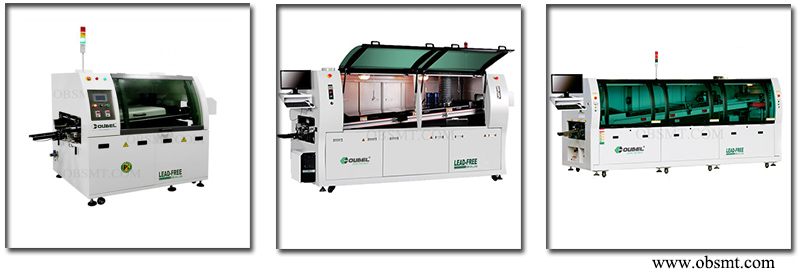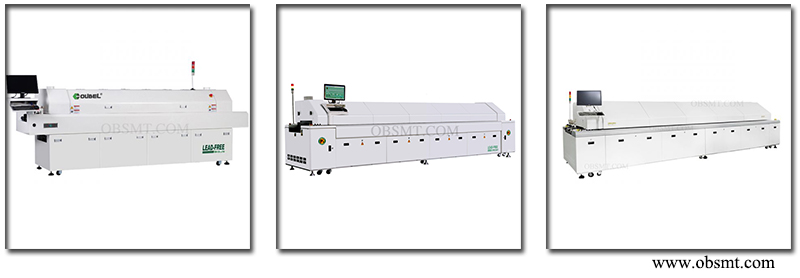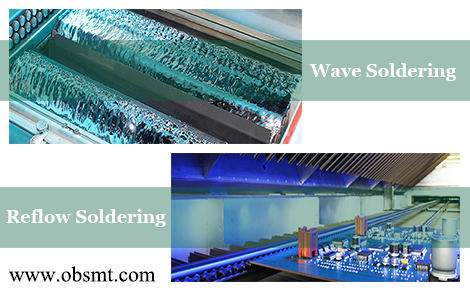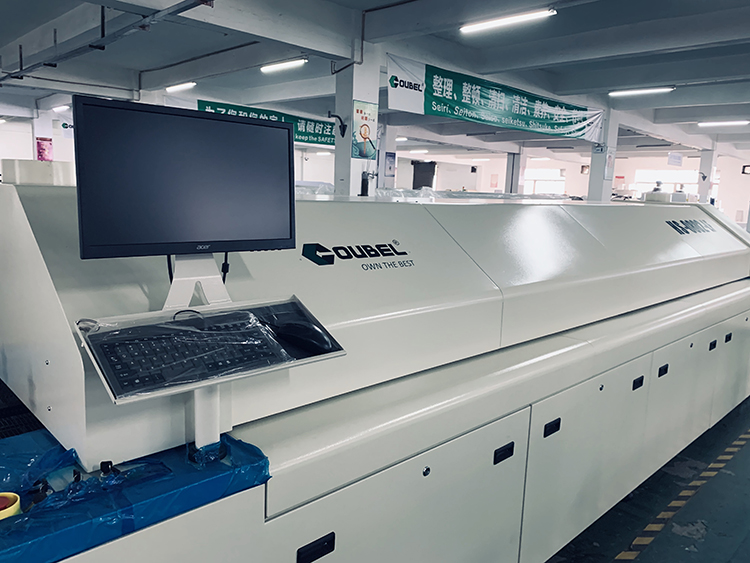- Welcome to OUBEL !
- +86 755 2954 6287
- sales@obsmt.com
Wave soldering&Reflow soldering

PCB/LED cutting machine
August 21, 2019
How to maintain a Reflow Oven?
August 23, 2019Prior to formal learn between wave soldering and reflow soldering, it’s important to understand difference between soldering, welding and brazing.
Soldering:Actually a low-temperature brazing and its filler is called solder.
Welding:Refers to the process in which two similar metals are melted to be bonded together.
Brazing:Refers to the process in which two pieces of metals are bonded together by heating and melting filler that is also called alloy at a high temperature.

Welding&Brazing&Soldering
When it comes to PCB assembly, soldering is applied through solder paste.
Soldering with solder paste that contains hazardous substances such as lead, mercury, etc. is called lead soldering.
While soldering with solder paste without hazardous substances is called lead-free soldering.
As its name implies, wave soldering is used to combine PCBs and parts through a liquid “wave” formed as the result of motor agitation. The liquid is actually dissolved tin. It is carried out in a wave soldering machine(Figure 1)

Figure1-Wave Soldering Machine
The wave soldering process is composed of four steps:flux spraying, preheating, wave soldering, and cooling.
a.Flux spraying:
Cleanliness of PCB surfaces is the basic element ensuring soldering performance, depending on functions of solder flux. Solder flux plays a crucial role in smooth implementation of soldering.
Primary functions of solder flux include :
1).Eliminating oxide from the metal surface of boards and component pins;
2).Protecting circuit boards from secondary oxidation during the thermal process;
3).Reducing surface tension of solder paste;
4).Transmitting heat.
b.Preheating:
In a pallet along a chain similar to a conveyor belt, circuit boards travel through a heat tunnel to carry out preheating and activate flux.
c.Wave soldering:
As temperature constantly rises, solder paste becomes liquid with a wave formed from the edge boards that travel above. Components can be solidly bonded on boards.
d.Cooling:
Wave soldering profile conforms to a temperature curve. As temperature reaches the peak in the wave soldering stage, it is reduced, which is called a cooling zone. After being cooled to room temperature, the board will be successfully assembled.

Wave Soldering Process
Reflow soldering permanently glues components that are first temporarily stuck to their pads on circuit boards using solder paste that will be melted through hot air or other thermal radiation conduction. Reflow soldering is implemented in a machine called a reflow soldering oven (Figure 2).

Figure2-Reflow Oven
This process primarily contains two steps. First, solder paste is accurately placed on each pad through a solder paste stencil. Then, components are placed on pads by a pick-and-place machine. Real reflow soldering won’t start until those preparations have been made.
a.Preheating:
This step serves two purposes during reflow soldering.
First, it allows boards to be assembled to consistently reach the required temperature to fully comply with thermal profiling.
Second, it is responsible for expelling volatile solvents contained in solder paste. Otherwise, soldering quality will be compromised.
b.Thermal Soak:
Similar to wave soldering, reflow soldering also depends on flux that has been contained in solder paste. Accordingly, temperature has to reach a level at which flux can be activated, or the flux fails to play its role in the soldering process.
c.Reflow soldering:
This phase occurs when the peak temperature is achieved, enabling the solder paste to be melted and reflowed. Temperature control plays a crucial role in the reflow soldering process.
Too low a temperature stops the solder paste from sufficiently reflowing;
Too high a temperature may cause damage on surface mount technology (SMT) components or boards.
d.Cooling:
Temperature will go down soon after the top temperature is achieved. Cooling leads solder paste to solidify, permanently fixing parts on contact pads on boards.

Reflow Soldering Process
Wave soldering VS Reflow soldering
Reflow soldering works best for SMT assembly, while wave works best for THT or DIP assembly.
Nevertheless, a circuit board almost never contains pure SMDs (surface mount devices) or through-hole components. In terms of mixed assembly, SMT is normally first carried out and then THT or DIP is performed, since the temperature required for reflow soldering is much higher than that required for wave soldering.

Auto SMT production line

Auto DIP production line
Any interested in our product,please contact hebe@obsmt.com.


